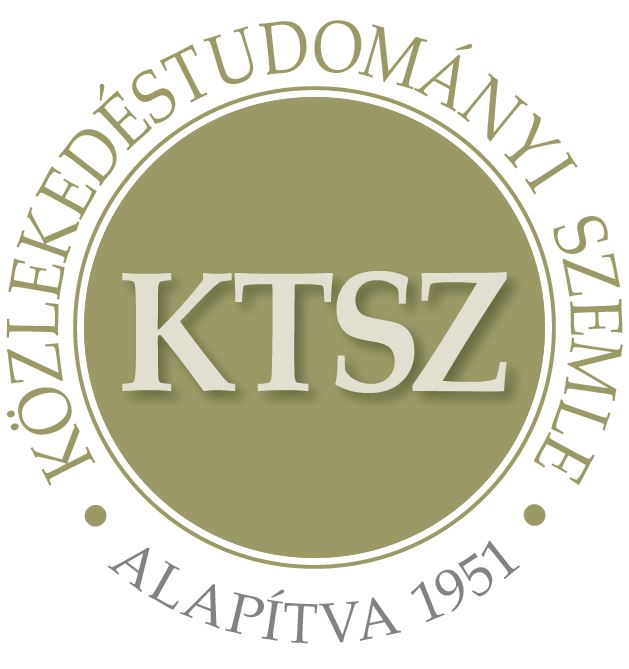Impact assessment of the painting of the stop line indicating the stopping place (before and after examination) at pedestrian crossings marked with signs, on a continuous road section
Abstract
Marked pedestrian crossings ensure that the most vulnerable road users (pedestrians, cyclists, scooters) can cross the roadway. Contrary to European practice, there is only one type of “zebra” used in our country, and it is often worn, with barely visible pavement
markings. Although the “Designated pedestrian crossing point” sign is designed in accordance with the Convention on Road Signs
and Signals, it is essentially an information sign, rather than an attention-getting sign. At this sign, the driver is obliged to give way.
To resolve this contradiction, road managers are trying a number of solutions to make the crossing place more recognisable and to
improve the willingness to give way. Since 2022, new features, dotted line pavement signs have been introduced, indicating the
stopping point at so-called line crossings on continuous road sections. Pre- and post-examinations were carried out in order to investigate the impact of this marking to see if any change in driver behaviour could be measured. The presentation of the results of the
before-and-after study conducted at two locations in the capital (district XI) aims to give an idea of how the willingness to give way
changes after a stop line is painted, indicating what further research could help to improve pedestrian safety.
Articles published electronically are open access (OJS), freely available online and can be downloaded. Authors of articles are not charged any publication or publishing costs (APC). Users have the right to read, download, copy, print, and search the articles, or share the full text with a link.
Authors must declare that their submission has not been previously published in another journal, that financial support has been acknowledged, and that the list of references is complete and accurate, including specification of URLs and DOIs (if available). When submitting a draft article, each author approves the submitted version. Authors guarantee that the article is their original work. Authors are required to participate in the peer review process, follow the advice of reviewers, meet the prescribed deadlines, and, if any, withdraw the submission or correct errors.
All submitted articles are subject to peer review, where the editors request an independent evaluation from at least one expert, ensuring that the reviewer(s) have no conflicts of interest with the authors. The final decision is made by the Editor-in-Chief, who takes into account the evaluations and the suggestions of the editors. The editors and reviewers treat the submission confidentially.
The publisher and editors are committed to maintaining high ethical standards and to preventing publications that involve research misconduct. They follow the COPE guidelines on such ethical issues.
The authors retain copyright and grant the journal the right of first publication under the Creative Commons License (https://creativecommons.org/licenses/by-nc-nd/4.0), which allows others to share the work, while acknowledging the authorship of the work and the first publication in the journal.
The journal archives all published articles, and the journal's owner, the Hungarian Society of Transportation Sciences, will continue to operate the database even if the journal ceases to be published.















